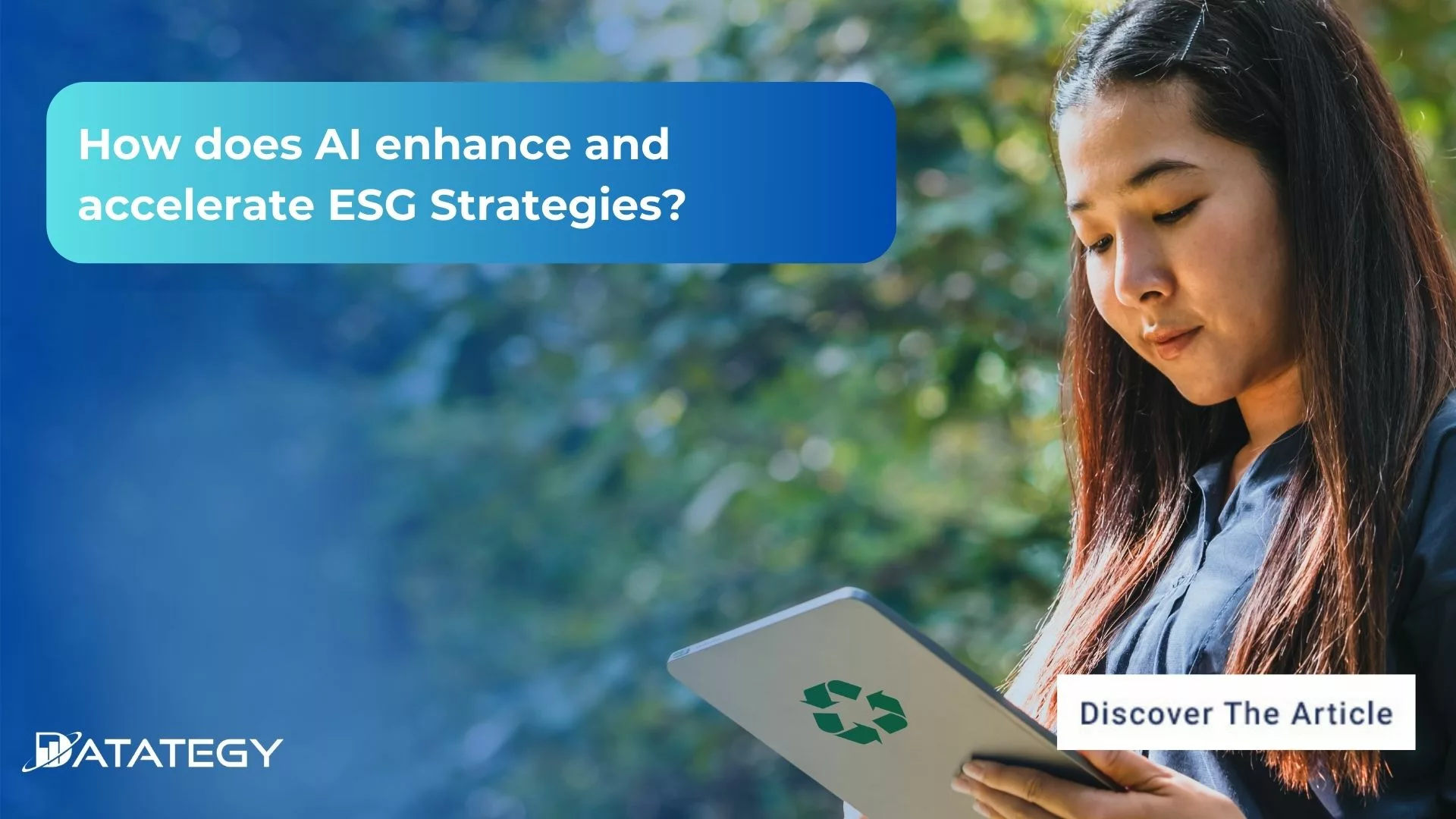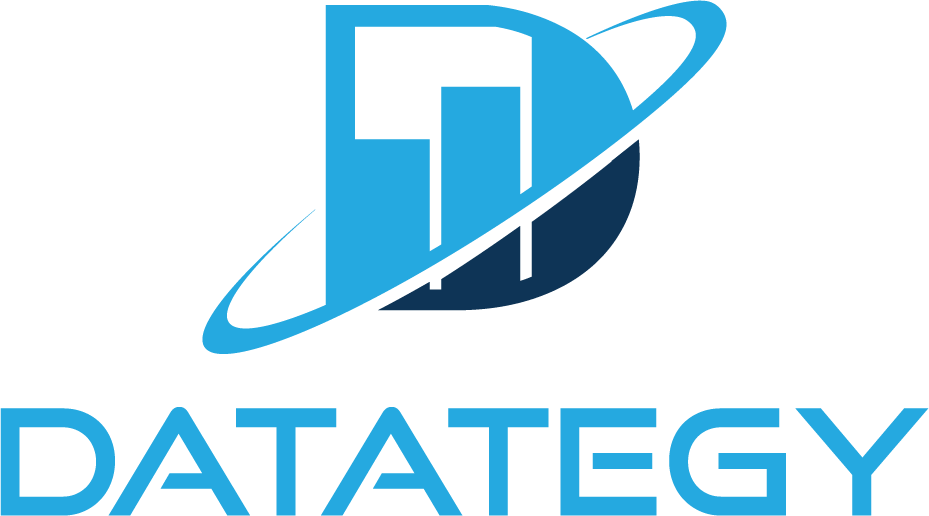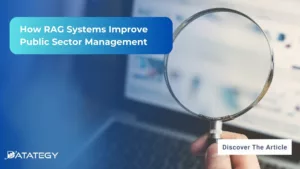How Law Firms Use RAG to Boost Legal Research RAG...
Read MoreHow does AI enhance and accelerate ESG Strategies?
Table of Contents
ToggleThe first artificial intelligence systems aimed to improve human life, not just business tasks. They focus on areas like healthcare and psychology. This year, the ESG (Environmental, Social, and Governance) issue should be a key topic.
If we are to harness the effectiveness of artificial intelligence capabilities, we need to align them with ESG needs, such as the environment, social responsibility, and governance. AI models can optimize energy consumption, contributing to environmental sustainability. In addition, AI also helps organizations follow ESG rules. It makes data collection and reporting easier. This improves risk management by spotting potential risks and giving useful insights.
By leveraging advanced algorithms and machine learning techniques, AI can enhance the accuracy of ESG risk predictions by 25%, enabling organizations to better anticipate and mitigate potential environmental, social, and governance-related risks. Gartner
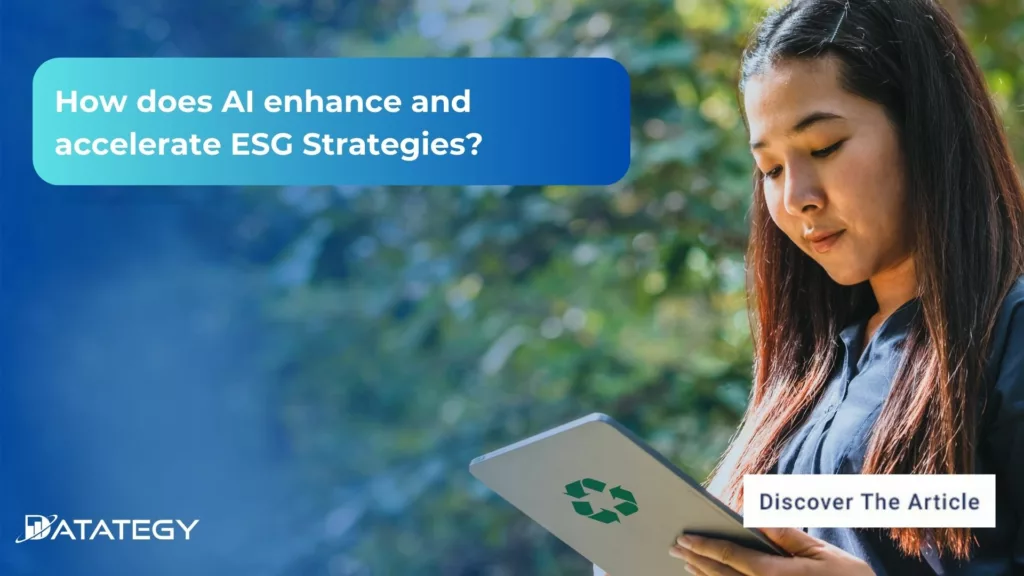
In this article, we begin by defining what ESG is and how artificial intelligence can improve its performance.
When did the term ESG (Environmental, social, and governance) first appear?
In the early 2000s, the term ESG (Environmental, Social, and Governance) was created. It serves as a way to assess a company’s responsibility, not just its financial success. Sustainability and business ethics have been discussed for a long time. The UN Global Compact’s Who Cares Wins report from 2004 gave a significant push to ESG. This report was developed with major financial institutions and marked the start of ESG as a formal strategy.
A major change in corporate strategy and investor objectives was signalled by this research, which underlined the significance of incorporating environmental, social, and governance considerations into financial analysis and investment decision-making.
Following the 2008 financial crisis, investors and regulators looked for better risk management tools outside of traditional financial indicators, which accelerated the growth of ESG. ESG became a popular method for evaluating a company’s ethical effect and resilience as worries about social justice, climate change, and corporate governance crises grew.
ESG’s place in international business and investment decisions was further cemented by the widespread adoption of ESG reporting frameworks by the 2010s, including those from the Sustainability Accounting Standards Board (SASB), the Task Force on Climate-related Financial Disclosures (TCFD), and the Global Reporting Initiative (GRI).
What does ESG mean?
Environmental, social, and governance, or ESG for short, are three important criteria that are used to evaluate a company’s effect in addition to its financial success. The environmental component assesses a company’s environmental impact, taking into account resource usage, carbon emissions, and climate change mitigation initiatives.
The social component examines a company’s treatment of its customers, workers, and communities, addressing topics such as data privacy, diversity, and working conditions. Last but not least, governance ensures responsible business decision-making by emphasising ethics, leadership, openness, and regulatory compliance. When taken as a whole, these standards aid stakeholders, investors, and regulators in determining how sustainably a business runs.
For example, ESG ratings provide investors with information about a company’s readiness for upcoming obstacles, including stricter carbon emission rules or rising customer demand for moral corporate conduct.
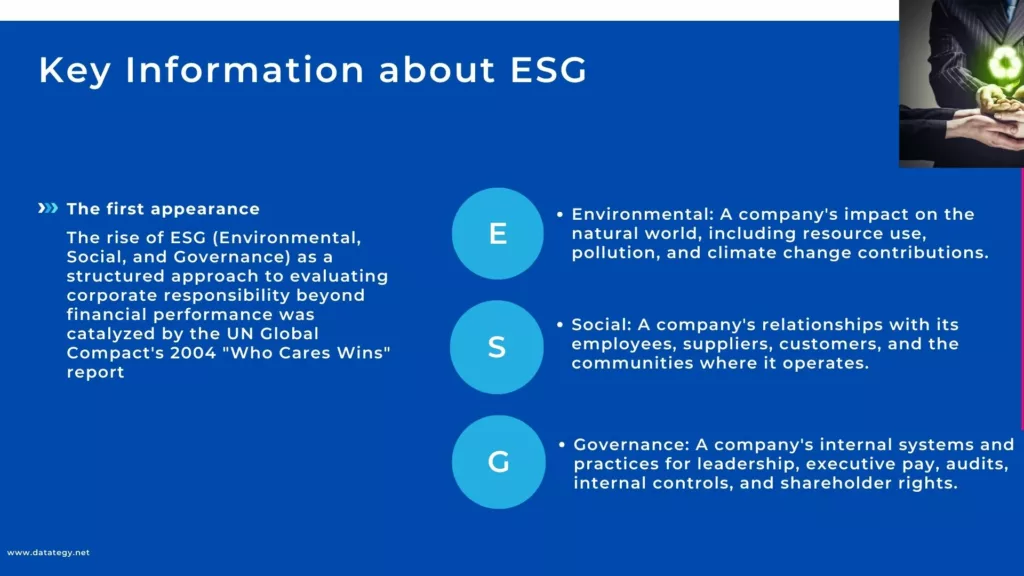
Key Information about ESG
What is the Role of AI in Enhancing ESG Reporting
Improving Accuracy and Consistency in ESG Metrics
The lack of uniformity in the measures used to evaluate corporate sustainability performance is one of the main issues with ESG reporting. Businesses frequently use distinct frameworks or even separate approaches for comparable metrics when reporting on ESG aspects. Investors, regulators, and other stakeholders may find it challenging to evaluate a company’s ESG performance correctly as a result of this discrepancy.
By enhancing the precision and consistency of ESG data, AI aids in overcoming this difficulty. Artificial intelligence (AI) systems are able to automatically detect anomalies or inconsistencies in data by cross-referencing it from various sources. AI can highlight discrepancies for evaluation, for instance, if a business declares a particular amount of carbon emissions in one part of its report and another set of data in another.
AI systems may also guarantee that ESG data is in line with commonly used reporting standards, including those from the Task Force on Climate-related Financial Disclosures (TCFD) or the Global Reporting Initiative (GRI). AI helps guarantee that businesses are giving stakeholders accurate and transparent information by improving the consistency and alignment of ESG measures.
Automating Data Collection and Analysis
The sheer amount and diversity of data that must be gathered is one of the biggest obstacles to ESG reporting. Numerous internal and external sources, such as financial records, news sources, social media, satellite data, operational data, and third-party audits, may provide this information. Businesses may collect and evaluate ESG-related data more effectively by using AI algorithms to automate the whole data collecting process.
AI is capable of scanning, interpreting, and extracting pertinent ESG data from unstructured material, such reports or articles, by using machine learning (ML) and natural language processing (NLP). AI, for example, may immediately extract important environmental data from sustainability reports or regulatory filings, such as carbon emissions or waste management procedures.
AI enables businesses to access data that was previously inaccessible, including geographical data from satellites or real-time environmental data from sensors. By utilising a variety of data sources, ESG reporting becomes more comprehensive and gives businesses a more comprehensive understanding of their social and environmental effects.
Real-Time Monitoring and Reporting
AI-powered solutions, which provide constant monitoring across a variety of data sources, have completely changed how businesses keep an eye on ESG aspects. These consist of operating systems, financial market patterns, social media activity, and satellite photography. AI, for example, may carefully monitor a business’s carbon emissions in real time and send out alarms right once if they rise over certain levels.
This makes it possible for businesses to act quickly to lessen possible environmental effects. AI can also track news sources, measure consumer sentiment, and identify supply chain interruptions as they happen. Instead of responding to concerns after they have escalated, this feature enables businesses to proactively handle new issues as they arise. AI greatly improves the timeliness and accuracy of ESG reporting by moving from periodic updates to real-time monitoring.
Making Better Decisions
Decision-makers may create more accurate, data-driven plans that support their ESG goals with the help of AI solutions that provide cutting-edge insights.
AI, for example, may identify certain areas where a business’s sustainability efforts may be falling behind, allowing leadership to concentrate resources where they are most required. AI makes sure that resources are distributed effectively by highlighting underperforming areas, which promotes ongoing advancements in sustainable measures.
AI can also suggest the most effective ways to reduce environmental impact without compromising revenue. This might entail implementing energy-efficient technology, streamlining supply chains to cut waste, or even locating renewable energy sources that complement the objectives of the business.
AI’s improved decision-making skills enable businesses to take advantage of opportunities and manage ESG risks more strategically and pro-actively. This change not only aids in fulfilling legal obligations but also establishes the business as a pioneer in corporate social responsibility. Organisations may balance ecological concerns with economic feasibility by utilizing AI to provide a strong framework for sustainable growth.
Generating Automated Reports with Generative AI
Teams in charge of ESG reporting find that using generative AI greatly lessens their burden, giving them more time to concentrate on strategic analysis and decision-making. The legitimacy and efficacy of the final reports are increased by this technology, which guarantees that they are precise, succinct, and compliant with legal requirements.
Additionally, automated report creation speeds up the entire process, allowing businesses to release their ESG reports more quickly and often while informing stakeholders in real time.
Businesses can make sure that their ESG narratives connect with their audience and offer a clear and thorough picture of their sustainability initiatives by utilizing generative AI. This move to automated, superior report development is a prime example of how AI may revolutionise business communications by improving their effectiveness and calibre.
Generative AI, which uses Natural Language Processing (NLP) models, is more than just data summarisation. It draws attention to important discoveries, patterns, and advancements made towards sustainability objectives, guaranteeing that every report is not only educational but also captivating and influential.
AI-Driven Strategies for Environmental Sustainability
AI for Discovering and Optimizing New Renewable Energies
The identification and development of renewable energy sources is one of the most important ways AI can support environmental sustainability. From solar and wind energy to more recent innovations like tidal and geothermal energy, the renewable energy landscape is broad and intricate. AI is well-suited to assist in the discovery of new possible renewable energy sources, the optimisation of their extraction, and the enhancement of their overall efficiency because to its rapid processing and analysis of vast datasets.
Additionally, AI is essential to improving how well renewable energy systems function. AI may be applied to solar power to track the performance of individual panels, forecast malfunctions, and recommend upgrades to increase energy output. AI systems in wind energy can evaluate turbine data, position them optimally, and even anticipate wear and tear, which lowers maintenance expenses and downtime. Energy suppliers may boost production, save expenses, and improve the overall efficiency of renewable energy generation by integrating AI into the management of renewable energy systems.
AI-Powered Resource Efficiency Optimization
An essential component of sustainable environmental practices is resource efficiency. By maximising the use of both natural and artificial resources, AI can minimise waste, improve consumption efficiency, and lessen its negative effects on the environment. Artificial intelligence (AI) technologies are being used to study everyday consumer behaviour and industrial operations to improve the sustainability and intelligence of resource usage.
Artificial intelligence (AI) algorithms may be used in manufacturing to optimize energy consumption, production lines, and supply networks, resulting in less waste and more effective use of resources. Predictive analytics, for instance, may predict demand trends, enabling businesses to modify production plans and stock levels to avoid waste and overproduction.
AI systems are capable of analysing energy consumption data from companies and buildings to identify inefficiencies like HVAC systems operating overtime or equipment left running needlessly. AI can suggest changes that save energy and lower carbon emissions by detecting these inefficiencies.
For example, AI is being used in water management to track water use, find leaks, and distribute water resources as efficiently as possible—all of which are vital in regions where water shortage is becoming a bigger issue.
AI in Energy Management Transition
The decarbonization of energy systems and the worldwide transition to renewable energy are two of the most important components of the battle against climate change. This shift in energy management is greatly aided by artificial intelligence (AI), which makes it possible to integrate renewable energy sources into current networks more easily, increase the effectiveness of energy storage, and optimise energy use in homes and businesses.
The management of energy storage systems is a crucial component of the energy transition. The unpredictability of renewable energy is one of its main problems. Wind power can vary according on the weather, while solar power cannot be produced at night.
In order to ensure that energy produced during times of high renewable output is effectively stored and used during times of low production, artificial intelligence (AI) is essential to battery storage system optimisation. AI can identify the best times to charge or discharge batteries by forecasting patterns in energy usage, which will boost productivity and lessen dependency on non-renewable energy sources.
Lastly, AI may assist customers in optimising their energy use, promoting more environmentally friendly practices in homes and workplaces. Smart thermostats and energy-saving appliances are examples of AI-powered home systems that may automatically change settings in response to human behavior and predictions of energy use.
Using AI to Promote Social Responsibility
AI-Powered Reskilling People
The workforce is undergoing an important shift as a result of the quick advancement of technology and the changing needs of the global economy. Organisations must continuously change and give their staff new skills in order to remain competitive and meet social problems. AI is helping people reskill, especially in fields where conventional employment responsibilities are being replaced by automation and digital technologies.
Platforms driven by AI are able to assess employees’ present skill levels, identify opportunities for growth, and provide tailored development recommendations. Through the use of machine learning algorithms, artificial intelligence (AI) can monitor market trends and forecast the talents that will be most in-demand in the future, directing employees toward pertinent educational opportunities.
AI, for instance, can assist in determining the competencies required for positions involving robots, automation, or artificial intelligence systems in the industrial industry. This keeps workers marketable in a labour market that is becoming more and more digital by assisting them in adjusting to new jobs that are created by technological improvements.
Additionally, by anticipating future skill shortages and offering proactive training, AI is assisting businesses in managing worker changes.
Removing Bias in Hiring
One of the most enduring obstacles to developing a just and equal workforce is hiring with prejudice, whether intentional or unintentional. Biases in recruiting decisions, ranging from gender to age and ethnicity, can result in discriminatory practices and a lack of diversity in organisations. By eliminating bias from the recruiting process and enhancing its fairness and inclusivity, AI holds promise for resolving these issues.
AI is capable of screening job candidates without being swayed by human prejudices. Biases based on gender, race, or educational background may inadvertently influence judgements made during the examination of applications and cover letters, which is a common step in traditional recruiting practices. AI-powered hiring tools evaluate resumes using algorithms, emphazising experience, education, and abilities above demographics.
AI helps guarantee that each applicant is assessed on the basis of their qualifications, free from prejudice or discrimination based on their history, by depending on data-driven methodologies.
AI may also help in interviews by examining applicants’ answers and assessing them using objective standards rather than personal opinions.
Enhancing Workplace Diversity and Inclusion
AI technologies can evaluate the degree of diversity in an organization by analyzing demographic data, including age, gender, race, and ethnicity. AI gives businesses useful information to create focused recruiting campaigns by pinpointing regions where particular populations are under-represented. By drawing applicants from a variety of backgrounds, this can assist companies in establishing a more equal and balanced workplace.
By taking into account variables like geographic location, industry experience, and educational background, AI algorithms, for instance, may analyse resumes to make sure that a company’s job advertising is reaching a variety of talent pools.
AI may also be used to monitor employee experience and engagement, giving information on how various groups perceive their working conditions. It might examine survey or interview responses from staff members and identify trends in discrimination or inclusion. This enables companies to determine if their D&I policies are working well or require revision.
AI may also be used to track the effectiveness of programs like employee resource groups and mentoring programs that aim to increase diversity, making sure that these efforts are having an impact and producing outcomes.
Artificial Intelligence to Strengthen Governance
AI for Regulatory Compliance and Risk Management
In the area of regulatory compliance, artificial intelligence (AI) may assist organisations in keeping up of evolving legislation and making sure that their procedures meet present standards. Businesses may automate the monitoring of laws, regulations, and industry norms by incorporating artificial intelligence (AI) into compliance operations.
Artificial intelligence (AI) systems are able to continually monitor and analyse regulatory documents, highlighting pertinent updates and changes instantly. Businesses are better able to make timely modifications and execute essential changes throughout their operations, which lowers the risk of non-compliance.
AI solutions may improve the efficiency, accuracy, and cost-effectiveness of compliance activities in sectors like manufacturing, healthcare, and finance, where regulatory requirements are frequently intricate and diverse.
By assisting businesses in anticipating, identifying, and reducing potential risks before they become serious issues, artificial intelligence (AI) also plays a critical role in risk management. Financial, operational, and reputational risk trends may be identified by training machine learning models on historical data. AI, for instance, may evaluate supply chain risks by spotting bottlenecks and disturbances or examining financial transactions to identify fraudulent behaviour.
AI can also help detect cybersecurity flaws, enabling businesses to take preventative action to protect their information and systems. AI enables businesses to manage risk in real-time by continually evaluating and monitoring data, which lowers the possibility of detrimental effects on operations or reputation.
Improving Accountability and Transparency
AI gives businesses the ability to automate reporting and improve the accessibility and comprehensibility of data. Reporting procedures under traditional governance models can be laborious and opaque, which makes it challenging for stakeholders to evaluate an organization’s performance and procedures.
However, AI-driven analytics solutions are able to provide comprehensive reports automatically, providing lucid insights into the performance, finances, and operations of an organization. These reports may be modified and updated in real-time, ensuring that stakeholders always have access to the most up-to-date and accurate information. Organisations may show their dedication to moral governance by providing this kind of openness.
AI also makes audits and compliance monitoring easier by enabling real-time checks on company operations and guaranteeing that operations are in line with the organization’s rules, values, and legal requirements. AI-driven systems, for instance, are able to identify differences between financial statements and operational data, highlighting possible problems for auditors to look into. In addition to increasing openness, these technologies enable organisations to function with more integrity, which is essential for preserving stakeholders’ confidence.
Helping AI Adoption by Enhancing AI Governance
Organisations may reduce the risks of adopting AI, such as algorithmic bias, data privacy difficulties, and ethical dilemmas, by implementing AI governance frameworks. Organisations may guarantee that AI systems comply with societal norms, legal obligations, and ethical standards by putting AI governance mechanisms into place.
To guarantee that AI is applied for the good of all parties involved, these frameworks frequently contain rules for data protection, accountability, and transparency in AI systems.
Standards are established by AI governance frameworks to guarantee that stakeholders who are not technical may comprehend AI systems with ease. This enables businesses to show that they are utilizing AI sensibly and that their choices are supported by clear, intelligible data and models.
Additionally, AI governance frameworks are essential for maintaining equity, avoiding biases in AI algorithms, and creating accountability procedures in the event that AI systems fall short of expectations.
A to Z of Generative AI: An in-Depth Glossary
A form of artificial intelligence called “Generative AI” enables machines to produce text, pictures, and music on their own. By automating activities, improving customization, and encouraging innovation, it is revolutionizing industries by using the power of algorithms and deep learning. This guide will provide you with a solid foundation in Gen AI terminology to help you better understand this exciting field.

papAI's role in developing a Proactive and Successful ESG strategy
In the ESG context, papAI stands as an all-in-one platform designed to streamline and optimize operations across several industries. By integrating seamlessly with digital twin platforms, papAI acts as the intelligence layer that processes vast amounts of real-time and historical data, providing actionable insights, predictive maintenance, and scenario simulations.
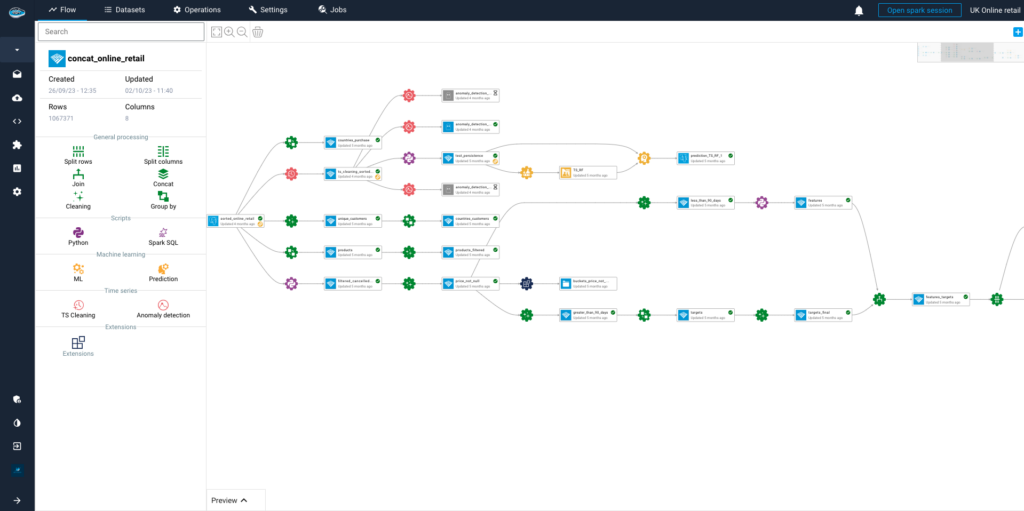
Here’s an in-depth look at the key features and advantages of this innovative solution:
Real-Time ESG Performance Tracking with Predictive Analytics
Monitoring ESG performance is a continuous and dynamic process, and in order to make prompt corrections and steer clear of possible hazards, organisations require real-time information. By incorporating predictive analytics into real-time ESG tracking, papAI tackles this issue. In order to provide current information on environmental impact, social responsibility, and governance practices, papAI continually analyses and tracks key performance indicators (KPIs) as ESG data is gathered.
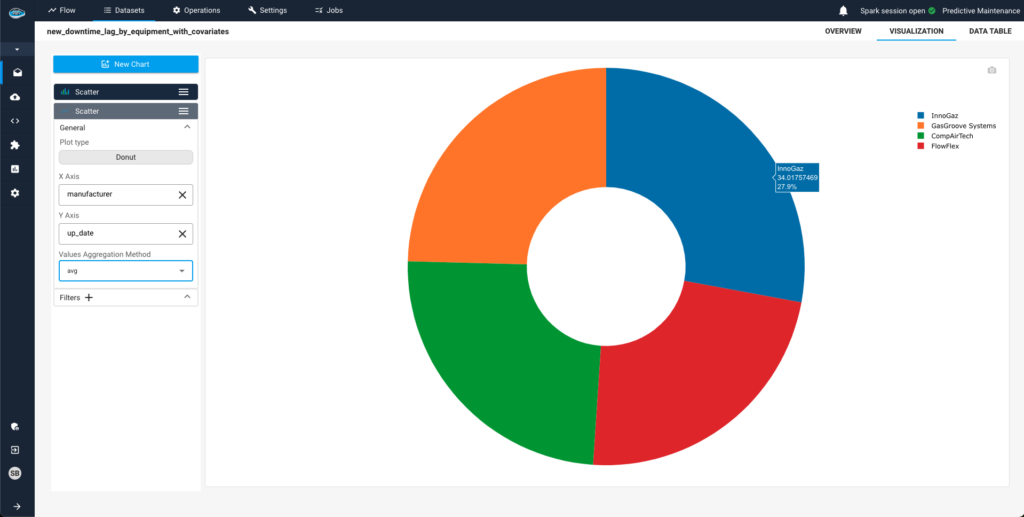
Automates ESG Data Collection through AI-Powered Integration
Accurate and thorough ESG data collection can be challenging, particularly if a company tracks environmental, social, and governance concerns using a variety of platforms. By using AI-powered integration to automatically collect ESG-related data from many sources, papAI streamlines this procedure. It guarantees that data is pulled in a consistent and organised manner by establishing connections with third-party data providers, ERPs, and CRMs.
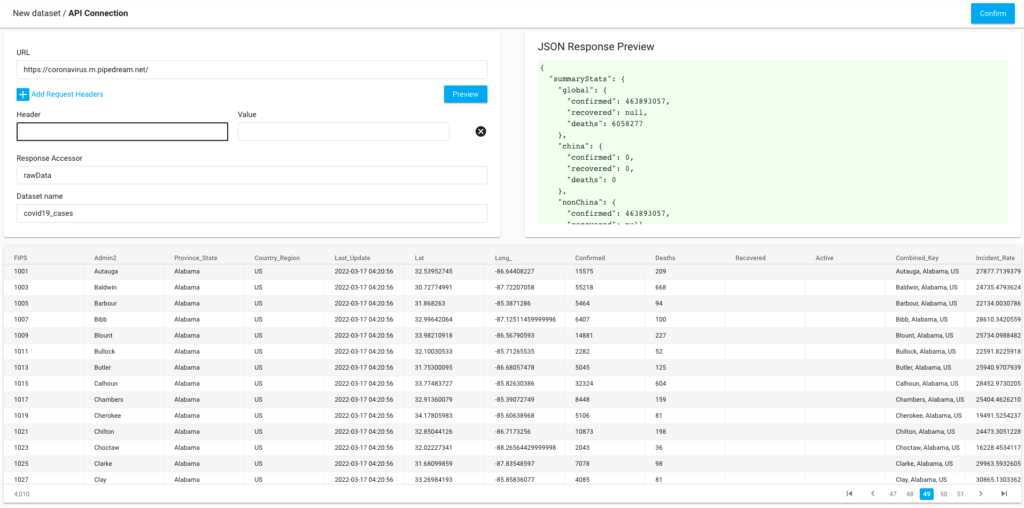
Enhance Decision-Making by Creating Simulation Scenarios
The capacity of AI to model different situations is a potent instrument for improving decision-making. Organisations may simulate possible future outcomes based on various ESG-related aspects by creating simulation scenarios with papAI. These simulations assist organisations in visualising how various strategies could affect their ESG performance over time. They might incorporate elements such as market trends, regulatory changes, resource availability, or social implications.
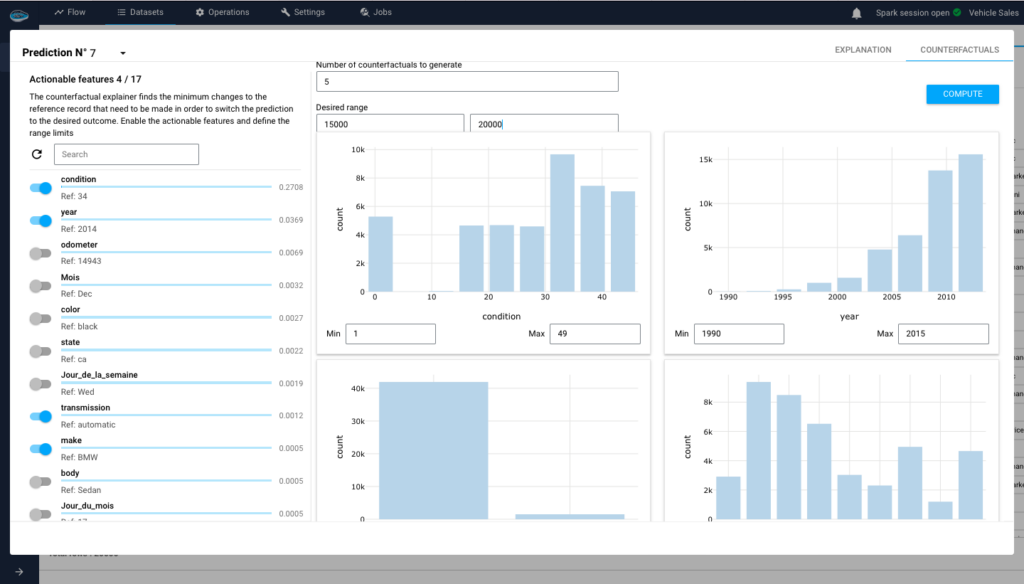
Explainability of the Results
As AI technology becomes increasingly embedded in decision-making processes, the ability to elucidate AI-generated results has become essential. The transparency of papAI’s AI processes is greatly appreciated to ensure decision-makers understand the methods used to reach conclusions. By providing clear and comprehensible explanations for its predictions and recommendations, the system facilitates users’ trust and enables them to confidently act on the insights it generates.
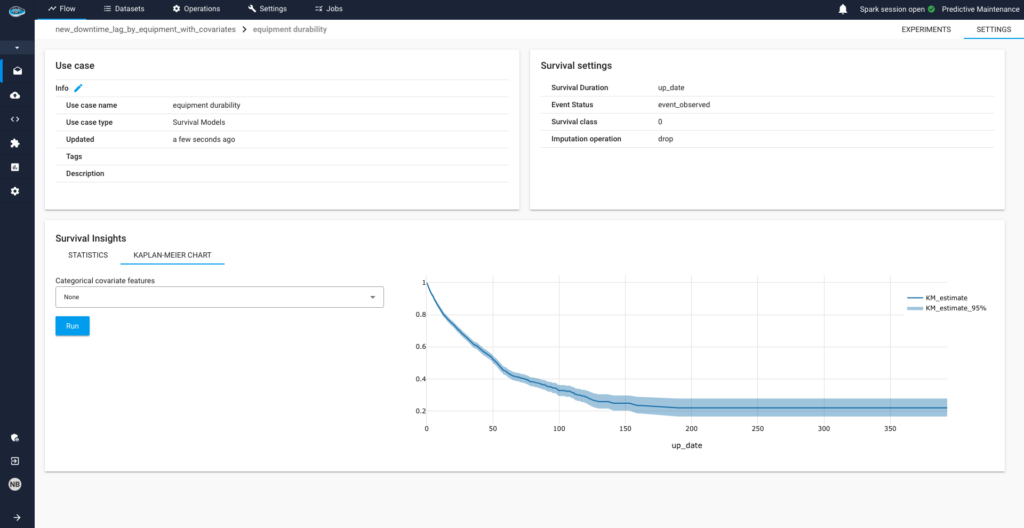
ESG Transformation: Leverage papAI's Predictive Analytics for Superior Performance
By integrating papAI into your ESG strategy, you can unlock valuable insights to stay ahead of regulatory changes, optimize resource allocation, and create tangible impacts across environmental and social factors.
Activate your free session today and see how our AI-driven platform can elevate your ESG transformation journey,
ESG stands for Environmental, Social, and Governance, a framework used to evaluate a company’s non-financial performance. It assesses a company’s impact on the environment, its social responsibility, and how well it adheres to ethical governance practices. ESG is crucial because it helps stakeholders, including investors and regulators, understand how sustainably a company operates beyond its financial performance.
AI enhances ESG reporting accuracy by cross-referencing data from multiple sources to identify discrepancies. For example, if a company reports different carbon emission figures in different parts of their report, AI can highlight these inconsistencies.
AI automates the process of gathering ESG data from diverse and unstructured sources, such as news articles, social media, financial records, and satellite data.
AI systems enable real-time monitoring by analyzing data from various sources, such as operational systems, financial markets, and even satellite imagery
I provides decision-makers with data-driven insights by highlighting areas where a company’s ESG performance may be lacking. This allows organizations to focus resources on underperforming areas, such as improving energy efficiency or sourcing renewable energy, thus aligning their operations with sustainability goals.
Interested in discovering papAI?
Watch our platform in action now
How RAG Systems Improve Public Sector Management
How RAG Systems Improve Public Sector Management The most important...
Read MoreScaling RAG Systems in Financial Organizations
Scaling RAG Systems in Financial Organizations Artificial intelligence has emerged...
Read MoreHow AgenticAI is Transforming Sales and Marketing Strategies
How AgenticAI is Transforming Sales and Marketing Strategies Agentic AI...
Read More